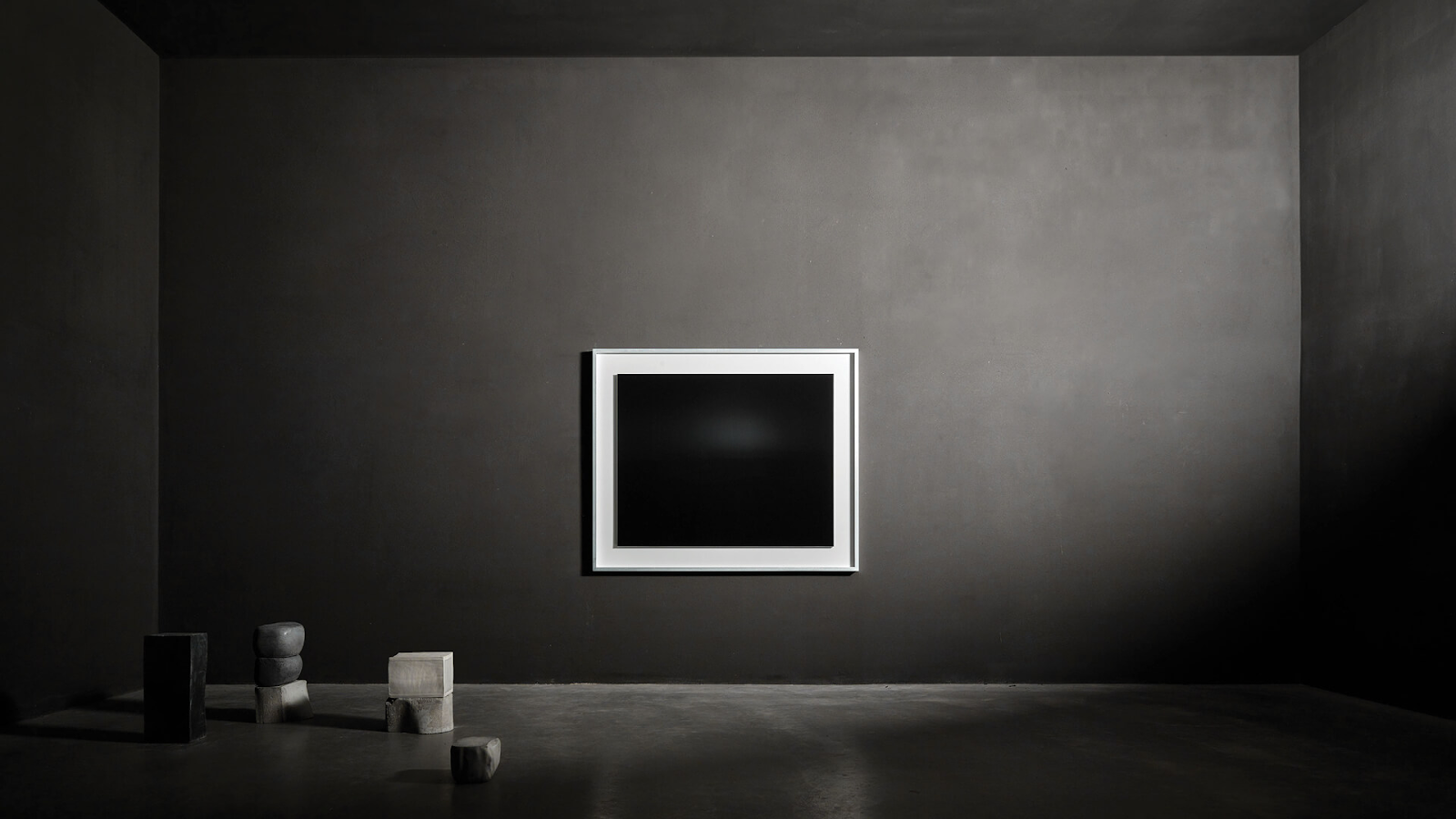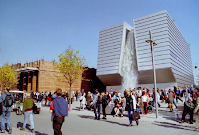Susan Sontag, defines art as a form of consciousness, and says that art gets the role of religion and mysticism previously held in human life to satisfy “a craving for the cloud of unknowingness beyond knowledge and for the silence beyond speech”. And in her essay “The Aesthetics of Silence”, she also mentions art that is silent engenders a stare which is as close to eternity as contemporary art can get.
 |
| Hiroshi Sugimoto - North Pacific Ocean, Stinson Beach (1994) |
In May, an exhibition called “Silence and Space” was held in Axel Vervoordt Gallery in Belgium. The show was a play on the idea of the ‘fullness of the void’ (volledig in Flemish). Anne-Sophie Dusselier, elaborates on the correlation between silence and space saying, “Like a musician uses pauses between the notes to enrich a composition, an artist does the same. Actually, it's from a blank canvas that significance and meaning can emerge. A space where there are a lot of things to discover. Where this world of creation starts from”. In the exhibition, a photograph from Hiroshi Sugimoto's "Seascapes" series was shown. Under the influence of Zen thought, he calls seascapes his ancestral home and in this work he captures an ocean in a way that the frame is almost full of blackness which feels like extreme silence and infinity.


 |
| "The Silent Room"- Marianne Heske (2000) |
At Expo 2000, with the theme of “Humankind-Nature-Technology”, the Norwegian Pavilion was an art installation called “The Silent Room” created by contemporary artist Marianne Heske. To carry the concrete experience of contemplative silence of Nordic retreat, she designed an enormous but empty room composed of aluminum sheets which were covered by “processed impressions of nature” with video-painting technique. Accompanying these, there were strange sounds like falling stones, deliberately disrupting the silence in the room to take attention to the relational aspect of silence. In the same manner, a waterfall at the entrance of the pavilion was built to represent the roaring noise of nature contrasting to the cosmic silence of the interior.
 |
| "In Silence" - Chiharu Shiota (2011)
|
In 2011, Chiharu Shiota said about her work “In Silence” that it was a meditation on sound and its absence. The artist spent 10 days spinning a vast cocoon of black thread around what remains of the piano she set fire to. Again, a spatial approach was taken to represent silence but this time it comes from her childhood memory of fire and silence over loss.

Comments
Post a Comment